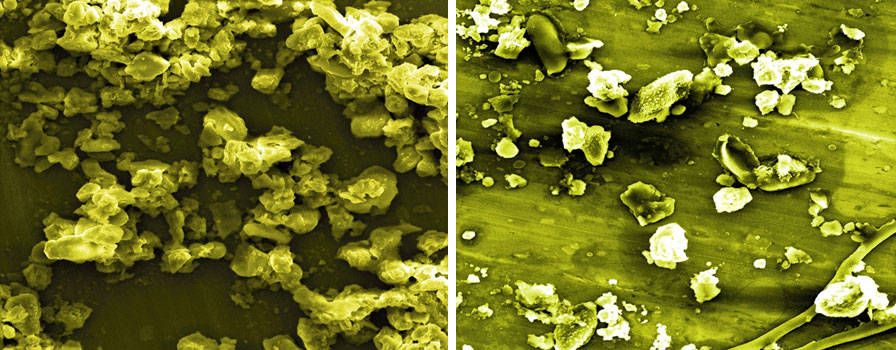Dust is in the air
Current legal limits for fine dust in the air are based on the mass and size of the particles. For health effects, however, not only the mass of dust is decisive, but also its chemical composition. Empa researchers have now analyzed the noxious potential of particulate matter in Switzerland and in China.
Anyone who is suddenly shaken by an uncontrollable cough attack on a cloudy day may suffer from the consequences of high fine dust load in the air. Breathing problems, cardiovascular disease and even lung cancer can be caused by these tiny particles. They include soot, metals and engineered nanoparticles. In order to control air quality more widely, a stricter Ordinance on Air Pollution Control has come into effect in Switzerland on 1 June 2018. Since then, PM2.5 has been created as the second standard for even finer suspended solids in addition to PM10. Both values are based on the mass of particles smaller than certain size limits – i.e. 10 or 2.5 micrometers in diameter. Empa researchers have now shown in a study that other parameters are also indicative for the noxious potential of the polluted air.
How dangerous is particulate matter – An analysis
Air samples from Switzerland and China
Jing Wang and his team from Empa’s Advanced Analytical Technologies lab examined air samples from Switzerland and China. As expected, the air quality of the metropolitan Beijing region performed worse than the samples from Switzerland. With their detailed analyses, however, the researchers also revealed that the composition of fine dust differs. «If we look at the so-called oxidative potential of particulate matter, for example, the effect of some Swiss samples with comparable particle pollution was more severe than in China,» says Wang.
The oxidative potential is one of the measures of the damaging effect of fine dust, as aggressive substances trigger oxidative stress and reactions of the body’s immune system. Oxidative stress can be caused by metals such as cadmium and arsenic or soot particles. In China, large quantities of ultrafine arsenic particles indicated an increased health risk. Samples from the Zurich suburb of Dübendorf, on the other hand, contained a lot of iron particles in the 10 micrometer range. «The iron particles originate from the abrasion of the nearby railway line,» says the researcher. Together with copper and manganese, the iron dust in the Dübendorf air contributed to the oxidative potential of the air samples.
Another Swiss value attracted the attention of the Empa researchers: The air sample from a Swiss farm for example fared worse than that from a busy road in the middle of Beijing, at least as far as the contamination with certain bacterial products was concerned. It is known that such endotoxins are abundant in the air in the surroundings of cows and Co. And especially for people with a weakened immune system, particles contaminated with bacterial endotoxins can pose a serious health risk.
«The effects of fine particles on air quality and health cannot be assessed solely on the basis of their mass,» says Wang. «But if the composition of particulate matter is known, a regionally adapted health protection can be implemented.» Otherwise one runs the risk of underestimating the regional air pollution or of taking measures that don’t reduce the health risk. Jing Wang and his team are now working out the basis for more precise analyses of the particulate matter composition. The aim should be to identify dangerous components more easily and to prevent health risks with optimized strategies.









